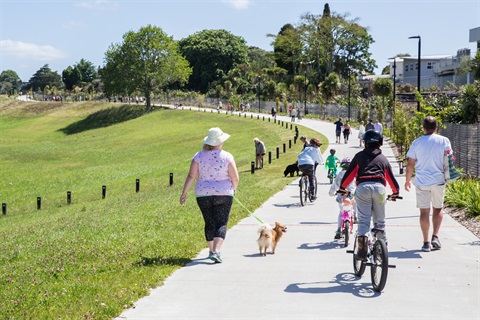Climate resilience projects

We are committed to planning for resilient infrastructure that will help to protect lives and livelihoods, minimise impacts from extreme weather events, and help our communities adapt to our changing climate conditions.
The projects below are current examples of our focus on climate resilience in infrastructure.
Blue Green Network Programme
Our Blue Green programme aims to create an attractive and environmentally sustainable urban environment that restores waterways, provides flood protection and addresses the impacts of climate change.
Kamo Road priority lane
As our cities grow, we need to make sure our transport networks can grow and adapt with them. Using priority lanes and clearways enable roads to effectively cope with current traffic demands as well as prepare for the effects of future development.
The goal of Bus and T2 Priority Lanes is to reduce traffic congestion and encourage more sustainable and shared modes of transportation.
This project is made possible thanks to the $12.6M Waka Kotahi ‘Transport Choices’ funding, granted to projects that make it easier to travel in ways that are good for all of us and our environment.
New water storage tank at Dip Road, Te Kamo
Water resilience is an important consideration for Whangarei District. We are building a new drinking water storage tank at Dip Road in Te Kamo to increase our stored water supplies for Te Kamo, Tikipunga and Hikurangi.
Te Kamo Shared Path Stage 5
Shared paths provide a safe, road-separated option for recreational and commuter cycling and walking with the path being shared between cyclists, pedestrians and mobility scooters.
They improve issues with congestion and parking in our city centre, while promoting exercise as you move around Whangārei. Work has begun on the final stage of the Te Kamo Shared Path, connecting it with Kamo Village.
This project is made possible thanks to the $12.6M Waka Kotahi ‘Transport Choices’ funding, granted to projects that make it easier to travel in ways that are good for all of us and our environment. This work aligns with our Walking and Cycling Strategy, which provides a framework for increasing participation in walking and cycling.